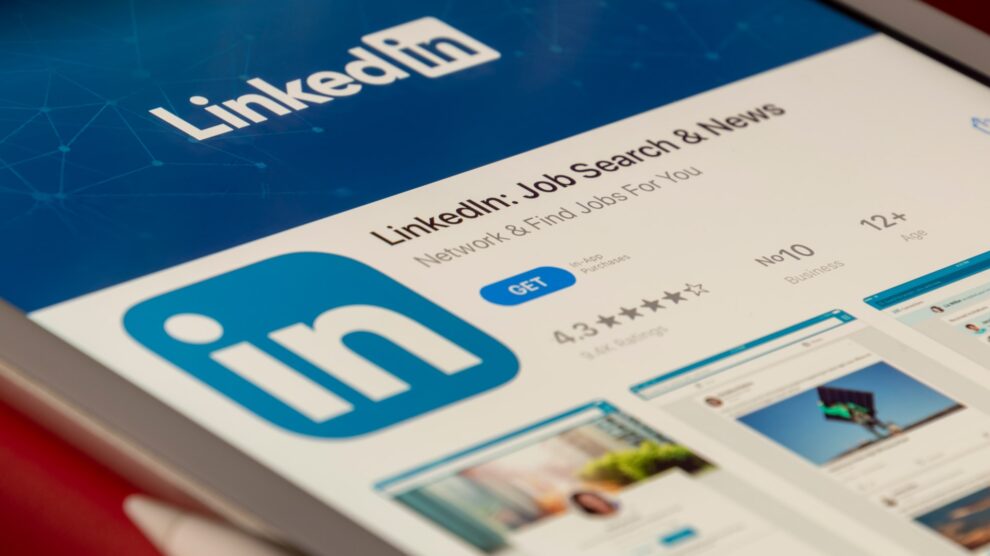These days, like it or not, your digital image is everything. How we present ourselves on social platforms can make or break our chances of career success.
Boosting your personal brand can open doors you may not know existed. A top-notch LinkedIn profile is the way to find those doors.
With a strong profile, you can widen your network by showcasing your experience, skills, and achievements.
Read on to find out how to promote your personal brand by crafting a strong LinkedIn profile that shows off your best professional qualities.
Your Profile is a Branding Opportunity
Think of your LinkedIn profile like that nice outfit you’d wear for an interview or a business meeting at an upscale restaurant. That profile should make you stand out and look your best.
It’s on a par with a well-composed resume.
A lackluster, basic profile doesn’t make a great first impression, does it?
LinkedIn has many attractive accessories for that profile “outfit” to ensure your brand is engaging and enticing. Take advantage of these features—don’t sell yourself short.
LinkedIn’s algorithm rewards users with complete profiles. You’re far more likely to show up in search results with a complete profile. LinkedIn assigns different strengths to profiles based on their completeness, and there’s a huge advantage given to those who utilize all the bells and whistles.
So—
How do you make your LinkedIn profile pop?
Avoid Humdrum Headlines
By default, LinkedIn uses your current job title as the headline. That’s all well and good. But, customizing the headline can highlight your expertise or vision for your brand. Think of your headline as your brand’s motto.
Your headline is often the first thing potential employers and network connections see, so make it stand out.
LinkedIn headlines have a limit of 120-characters (with spaces). This is equivalent to about 18 words.
Recipe for a delicious headline:
- Job title or area of expertise
- Company name
- Accomplishment/selling point
Example:
ESOL Program Coordinator | Top Academy English School | Delivering Exceptional Curriculum for Over 15 Years | Second Language Acquisition Specialist
This headline is much more impressive than if it had just had the job title.
And your picture should match the professionalism the headline conveys.
Pick the Perfect Pic
Having a professional picture on LinkedIn is essential to your brand.
A photo done by a professional photographer is best—the lighting will be perfect and the picture will be flattering.
If this is out of your budget, simply use a decent camera and soft lighting. Your picture should reflect your current appearance. Take a fresh picture if a couple of years have gone by.
- Specs: Square—400 x 400 pixels, under 8 MB in size. Make sure it’s high resolution. And your picture should take up at least 60% of the frame.
- Appearance: your expression should be friendly, yet professional. Often, a nice smile, with teeth showing is preferable to closed-mouth smiles. Try not to over-filter your picture. If you want to use a filter, select one with a natural look.
- Attire: your clothing should fit with your brand. Wear something you’d wear to your workplace…unless your workplace is home. PJs won’t give the best impression!
The bottom line: a professional photo will get a user 14 times more views on average than other types of profile pictures.
Make the Background Section Count
You’ve probably seen that stark blue default background image plenty of times on profiles for those who’re starting off in their careers or are LinkedIn newbies.
But, this space is golden for building your credibility and showing off something you’re good at.
This space can be devoted to something directly related to your current field, or a side gig. Your profile will really pop and enhance your personal brand if you pick a decent background picture.
LinkedIn recommends the following:
- A JPG or PNG file of an image that’s long and narrow, less than 8 MB and 1584 x 396 pixels.
Adding that background photo is easy-peasy.
- Click the Me icon at the top of your homepage
- Click on “View profile”
- Select the camera icon located at the top right corner of your intro section
- Then upload photo, and click “Open”
- Click “Apply”
Don’t Skip the Summary Section
This section is one of the first places that’s checked out by those visiting your profile.
If you’re a job seeker, recruiters will definitely check out this section, so compose a summary that shows your hard skills first and foremost.
So, not this:
“Energetic, innovative, and adaptable data analyst.”
But, this:
“Data analyst with over six years experience performing analyses, with expertise in SQL, Oracle, and Python.”
The latter is a line for a summary they can sink their teeth into.
Plus, your summary should include:
- Data—percentages, dollar amounts, and numerals for any of your accomplishments adds credibility
- White space—Long blocks of text aren’t reader-friendly in our fast-paced, digital world. Studies have shown that using white space is more pleasant on the eyes. Short, to-the-point paragraphs will keep their attention.
- Keywords—adding keywords from job descriptions into your summary can improve your chances of getting noticed by potential employers
- Personality—people want to know who you are. That’s why they’re looking at your profile. Nothing conveys your personal brand better than your own personality.
For example:
“My penchant for dark chocolate and espresso are what keep me plugging away at my artistic tote bag business!”
From the “Summary” section, you can move on to sharing your professional and educational background, plus all the skills you’ve acquired.
Wow Them with Your Work, Skills, and Education
It’s obvious that your personal brand is a product of your experience, skills, and education.
If you don’t add to these sections, your profile will be sorely lacking. And your personal brand will not be communicated.
Experience section: Don’t rehash your resume
Don’t be tempted to copy/paste your work experience from your resume to the LinkedIn “Experience” section.
You have more freedom with the LinkedIn Experience section. You can add experience outside of what is typically included on the “relevant experience” resume. Freelance work or side gigs can be included. This section shouldn’t be as weighty as your resume. Avoid giving details for every position. Summarize and highlight your biggest achievements.
Also, no need to shy away from the first person—using “I” and a conversational tone is welcome.
After you document your past and current jobs concisely, it’s time to move on to the next section of your LinkedIn profile: “Education.”
Education section: Include every college or university
A neat feature of LinkedIn is that when you peruse their jobs, it will tell you how many school alumni are applying for the job.
Hint, hint—
You can hit up the alumni who work there and mention your interest in the job, which can increase your chances if they have any influence on who’s hired. Therefore, it’s a sensible idea to add any and all higher education institutions you’ve attended.
And, for those who don’t have a college degree, make sure to add any formal training you’ve had. Showing you’ve taken the initiative and completed a course is worth displaying.
After “Education” is the “Skills” section.
Skills section: Let your skills shine—and endorse others’
The “Skills & endorsements” section will add a lot of flavor to your personal brand on LinkedIn. A healthy section will include 10+ skills. But, don’t add skills that you aren’t truly familiar with.
The skills you select make you more searchable.
After you add the skills, you can click and drag them to arrange them in whatever order you like. Ideally, place the most important skills regarding your brand at the very top.
Lacking a skill you’d like to learn? Check out LinkedIn Learning, chock-full of videos, tutorials, and almost any professional topic you can think of.
Next, skills endorsements matter.
On LinkedIn there’s a definite “You scratch my back, I’ll scratch yours” approach to endorsements.
In other words, if you want to get endorsed, do unto others.
When you’re endorsed, it increases your credibility. People will trust your brand.
To endorse someone else’s skills:
- Click on their profile and go to “Skills & endorsements”
- Find the skill you wish to endorse and click the plus sign
- Use the form that pops up to rate the person’s proficiency and explain how you’ve been able to see the skill in action
Of course, don’t be an endorsement spammer! Only endorse if you know the person’s work and can feel confident in the contact’s skill you’re endorsing.
Once you feel confident with your profile, no shame in feeling a tad vain. Time to create a LinkedIn vanity URL.
Create a LinkedIn Vanity URL
Whether you’re a fan of vanity plates or not, a vanity URL on LinkedIn is great for your personal brand.
It’s a branded link that’s snappier and shorter than the URL that LinkedIn produces by default.
This is a way to attract an audience because the message is clear.
A vanity link displays a condensed, focused message—your brand.
A LinkedIn vanity URL with your personal or company name makes it easier for networking contacts to find you, plus it looks more professional.
Say goodbye to that messy string of characters, numbers, and symbols and change to a vanity LinkedIn URL:
- Click the Me icon at the top of your LinkedIn homepage with the drop-down arrow
- Click “View Profile”
- Click “Edit public profile & URL”
- The Public profile settings page will open
- Click the pencil icon on the right sight under “Edit your custom URL”
- Enter what you would like to be in your custom URL
- Don’t forget to click “Save”
If you’ve gone through all the steps above, your personal brand has gotten a major upgrade on LinkedIn. This will boost your chances of getting noticed and a new job in line with your skills and interests if that’s what you’re in the market for.
With all the profile pieces in place, build your connections, create engaging content, and your personal brand will shine.
To Wrap Up
LinkedIn is the place to promote yourself professionally. It’s the best way to promote your personal brand. Plus, the networking possibilities are endless.
And—
If you’re looking to attract job possibilities, LinkedIn is a top resource for recruiters. In fact, more than 95% of recruiters use LinkedIn’s tools to find the perfect candidate for a job. Over 57 million companies are on the site, with over 15 million jobs postings.
So, get those LinkedIn profiles in tip-top shape to give your personal brand a major boost.





